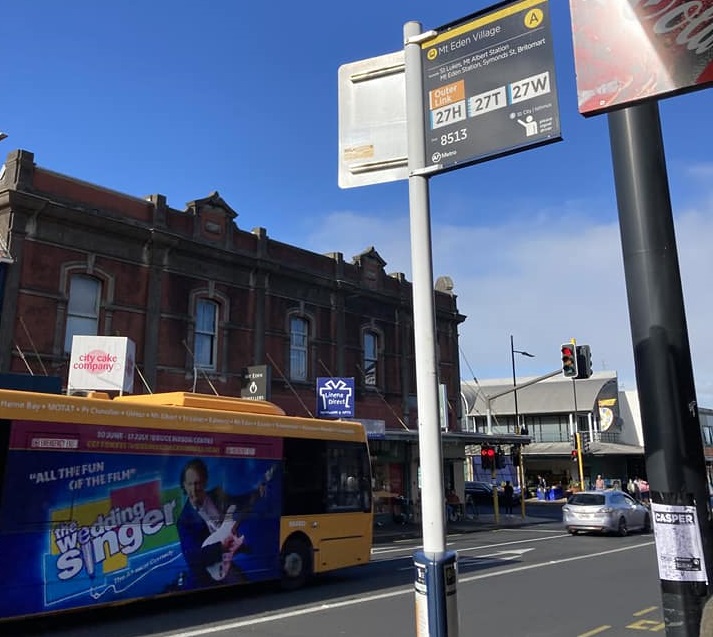Today marks Bus Driver Appreciation Day.. Auckland Transport is encouraging all of New Zealand to thank their driver or let the bus go first if you are in a vehicle on the road as a united show of appreciation.
Following recent attacks on bus drivers, Abdul Mohamud, Community Advocate and former Passenger Service Vehicle Driver, wrote this piece. First published in the Central Leader.
In the last couple of weeks, we have seen reports on attacks of Auckland bus drivers by unruly individuals. These kinds of attacks have occurred in the past however this time the frequency and the brazen attitude of the perpetrators is increasingly of concern. Also, this time round racial undertones are marred in these attacks.
Driver Rajnish Trehan, of Indian ethnic heritage was told that this is not his country and that he is a servant before he was inflicted on facial injuries. Images of him bleeding on the face have attracted anger and concern across Auckland and beyond.
Another Indian driver was also attacked and hit with a skateboard for simply asking a group of passengers to pay for their fares. He was also spat on, an indication at least to some ethnic cultures that someone is of inferior race. Mr Singh has been nursing his injuries and shared his mental and physical pain.
Bus passengers have not been spared either as grotesque assaults have also been reported. In July a Chinese boy was attacked with a metal rod in a bus leaving the 16-year-old schoolboy with facial injuries. This has caused community leaders to call for greater measures to protect their children. Although the boy was severely injured, a passenger intervened to support the boy and probably discouraged more attacks.
Relying on the public.
As a former Passenger Service Vehicle (PSV) driver I understand the fear of one day encountering those who don’t mean well masquerading as passengers. Having driven passengers during night shifts the fear of one day being confronted by an attack was too much to bear. My greatest fear was to be attacked with no one around to intervene or even call the police or ambulance on your behalf. This brings me to the question of as a society what our role is, in this context. Whatever happened the ‘be brothers’ keeper.
It is high time we have open conversation as a society regarding standing up for for victims in public spaces in our midst. These victims are everyday people going about their businesses. Those who work hard to take us to our jobs, take our children to schools and our elderly to appointments.
When I ask the drivers, about possible solutions, they shared that while screens might help protect the drivers but there are concerns that some aggressors might vent on the passengers as a get back. This driver has also shared that passenger intervention is crucial to their survival. He always has hope that in any attack his passengers will intervene and protects him.
This brings us to the crucial question of us as passengers, what role we could play in standing up for our drivers or fellow passengers. While there is no legal obligation to intervene, to be good Samaritan, I believe we as passengers have a moral obligation to act in order to act in discouraging or prevent these attacks to occur.
Choosing to be an ally.
In their book Subtle Acts of Exclusion, the writers Tiffany Jana and Michael Baran share with us on how we as individuals can understand, identify and stop microaggression. While in their book their focus is on microaggression, a small subtle act of exclusion against marginalised communities, we can equally apply their suggestions to what we are faced with.
The writers identified the types of actors in an aggression scenario. They called the victims, in our case bus drivers and passengers as ‘subjects’. They named the aggressor as an ‘initiator’, those who initiate the aggression. The third group are the people who witness an aggression, they called them the ‘observer’.
Our focus is on the observer because they are many in number and have more power. Their role is very important as the choice they make in that situation could have significant impact on the outcome of the aggression. When an observer intervenes by standing up for the victims, then they become an ally. An observer who chooses not to intervene becomes a bystander. Some observers might feel that it is not their place, to intervene for various reasons and the writers acknowledge that.
While law enforcement plays a crucial role in these cases, but for practical reasons it is impossible for police to be everywhere. But the observers are there most of the time. It is the observers who can make a difference.
Public intervention solution has been adopted overseas. The Transport for London TfL is running Active Bystander Awareness training. This training is for members of the public to understand what an ally is and how can allies stand up for the victims.
It is crucial for all stakeholders to focus on the most important players in this context, the observer. How do we encourage, support, and motivate all of us to stand up to those who have fallen victim while providing crucial services to us. Sometimes we look for solution that can be found within us.
Disclaimer: This piece does not advocate for the public to put themselves in harm’s way. It opens up conversation regarding the role of bystanders

